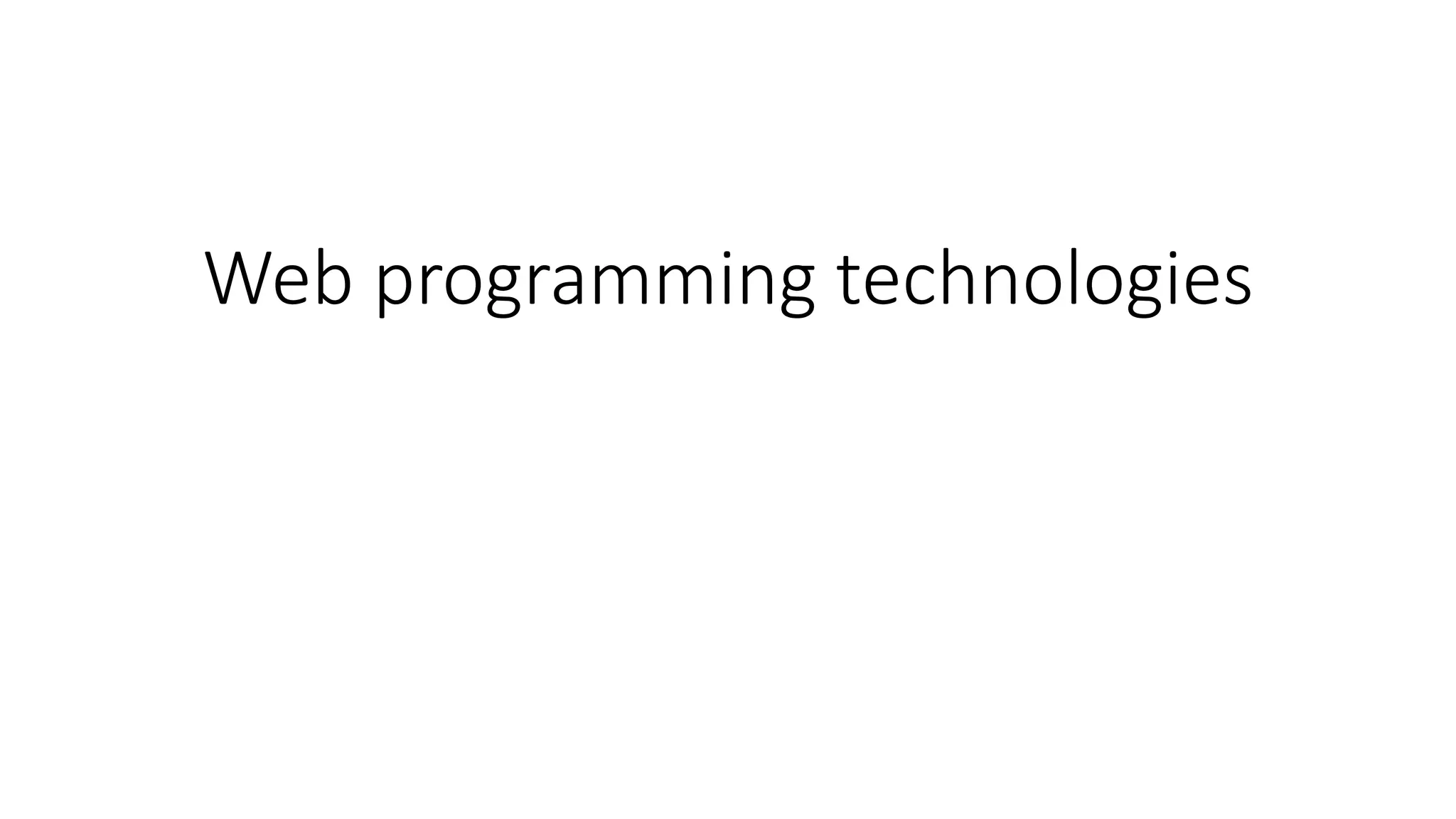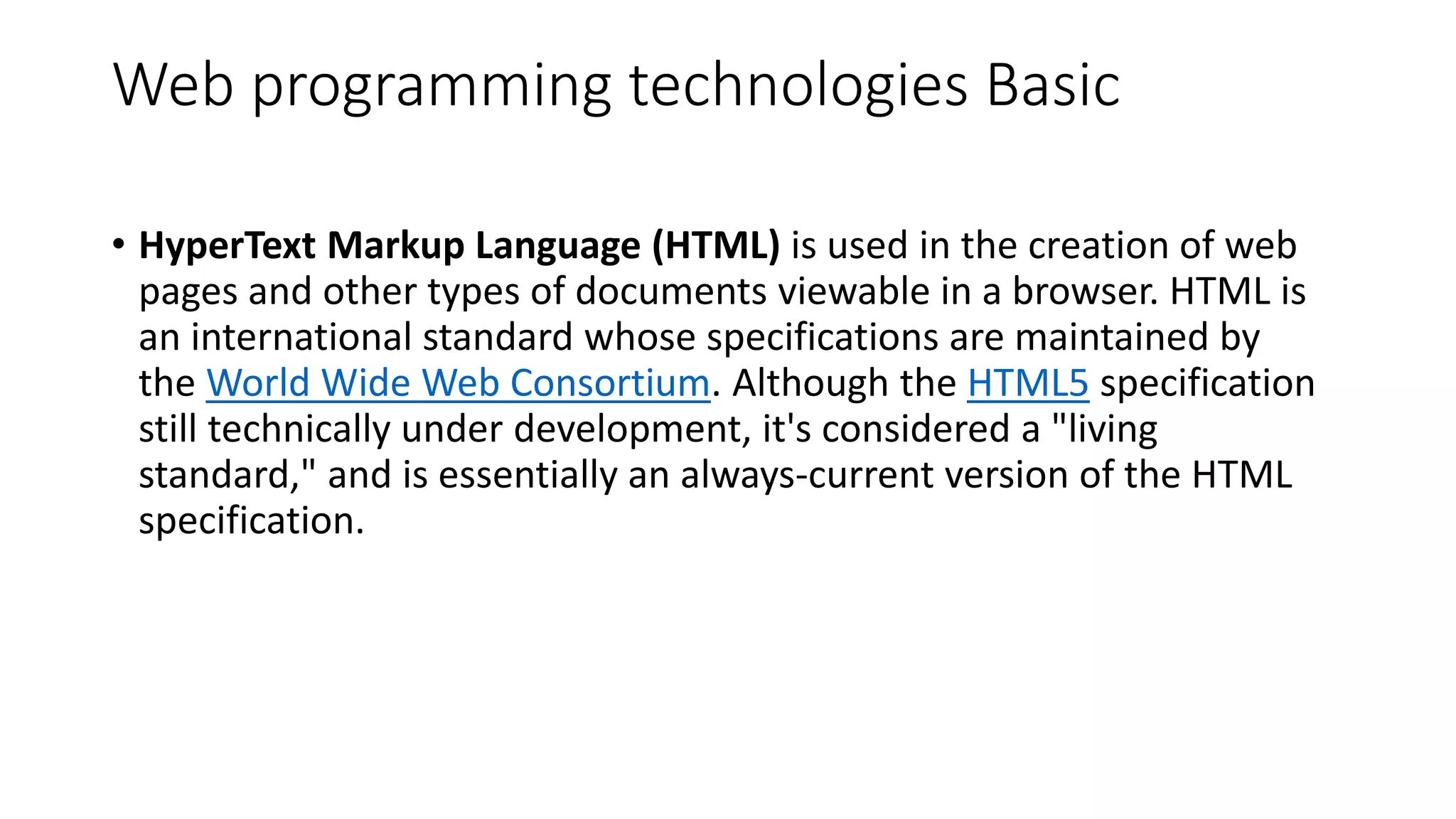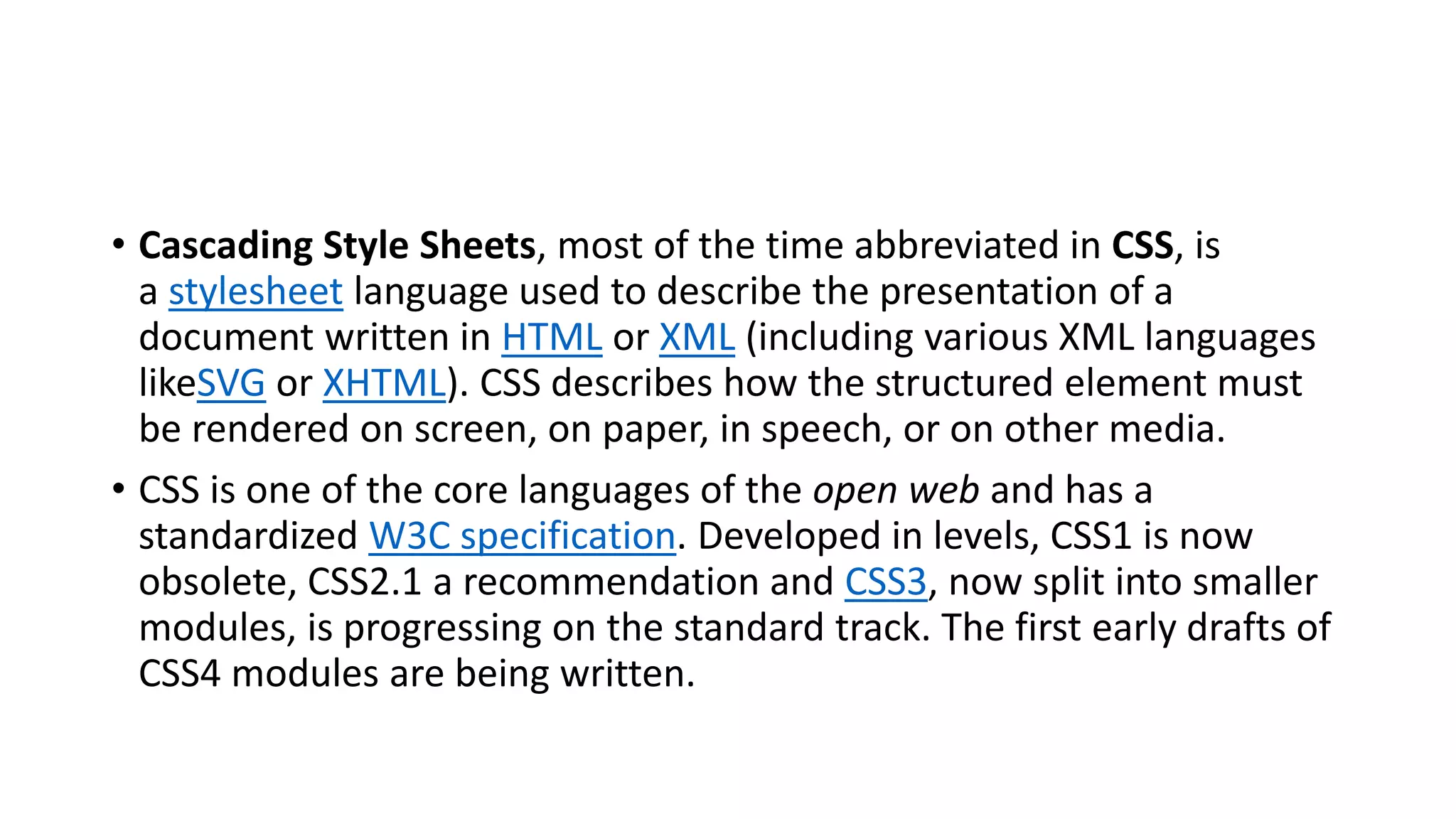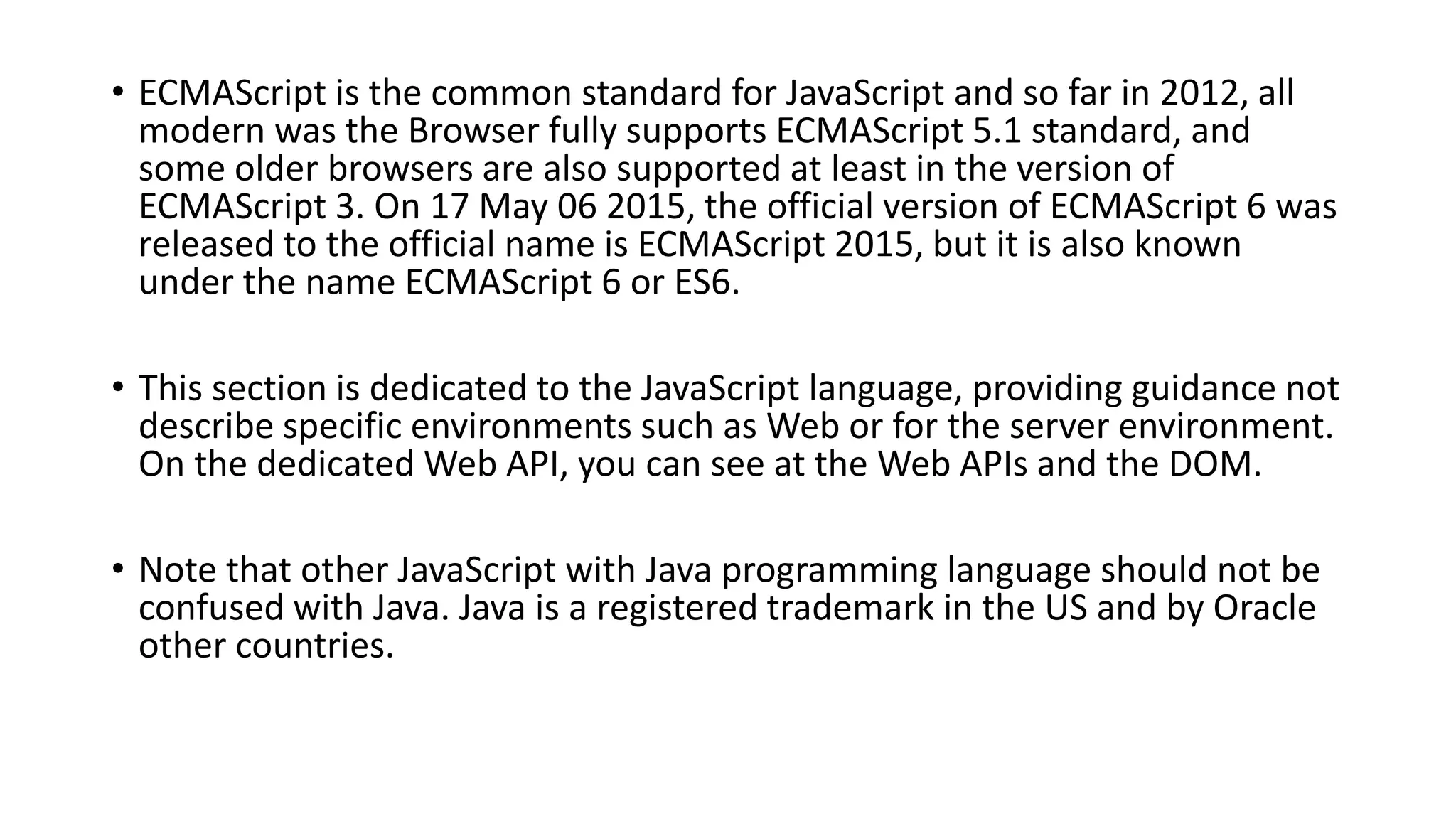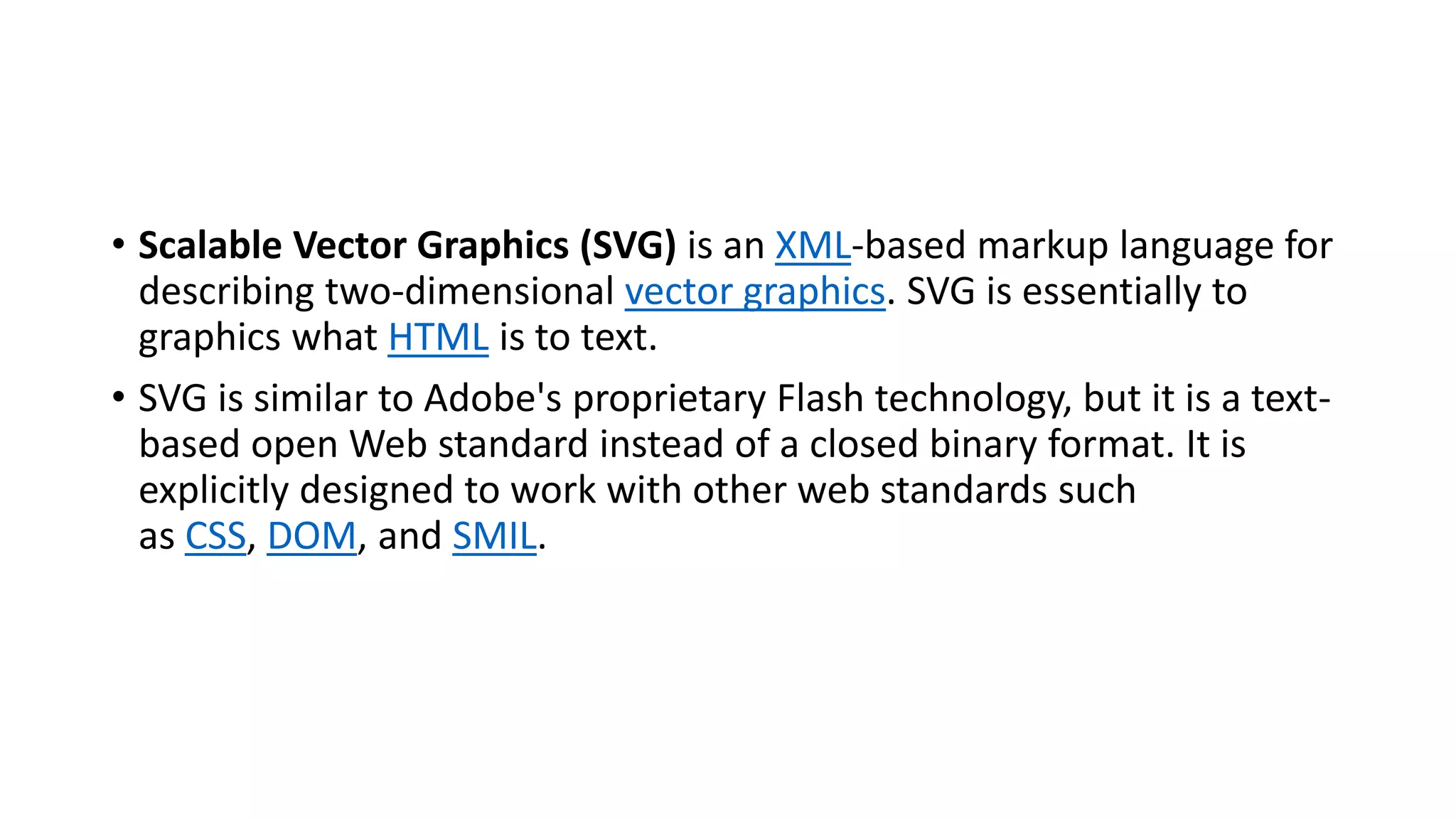Web programming technologies include HTML, CSS, JavaScript, and SVG. HTML is used to create web pages and documents viewable in a browser. CSS is a stylesheet language used to describe how structured elements in HTML and XML documents should be rendered. JavaScript, also known as ECMAScript, is the common standard programming language for client-side scripting. SVG is an XML-based language used for describing two-dimensional vector graphics.
